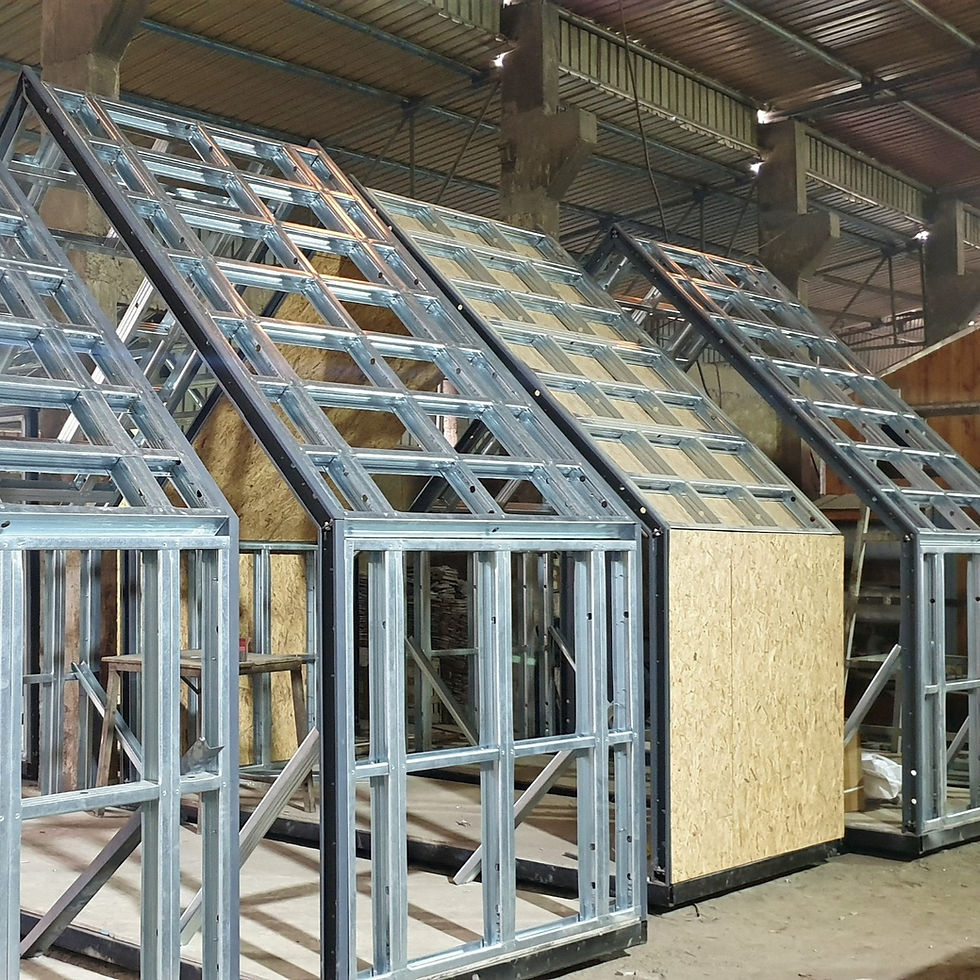Advantages of Modular Construction
- Loom Craft Modular

- Apr 26, 2020
- 3 min read
Modular buildings are argued to have advantages over conventional buildings, for a variety of reasons.
Speed of construction/faster return on investment. Modular construction allows for the building and the site work to be completed simultaneously. According to some materials, this can reduce the overall completion schedule by as much as 50%. This also reduces labor, financing and supervision costs. To save even more time and money, nearly all design and engineering disciplines are part of the manufacturing process. Also unique to modular construction is the ability to simultaneously construct a building's floors, walls, ceilings, rafters, and roofs. During site-built construction, walls cannot be set until floors are in position, and ceilings and rafters cannot be added until walls are erected. On the other hand, with modular construction, walls, floors, ceilings, and rafters are all built at the same time, and then brought together in the same factory to form a building. This process can allow modular construction times of half that of conventional, stick-built construction.
Indoor construction. Assembly is independent of weather, which can increase work efficiency and avoids damaged building material.

Ability to service remote locations. Particularly in countries in which potential markets may be located far from industrial centers, such as Australia, there can be much higher costs to build a site-built house in a remote area or an area experiencing a construction boom such as mining towns. Modular buildings are also beneficial in providing medical and sanitary facilities where time, space, and money are an issue.
Low waste. With the same plans being constantly built, the manufacturer has records of exactly what quantity of materials are needed for a given job. With the consistency, builders can design systems that use common lengths of lumber, wallboard, etc., cut items with maximum efficiency, or be able to order special lengths in bulk. While waste from a site-built dwelling may typically fill several large dumpsters, construction of a modular dwelling generates much less waste. According to the UK group WRAP, up to a 90% reduction in materials can be achieved through the use of modular construction. Materials minimised include: wood pallets, shrink wrap, cardboard, plasterboard, timber, concrete, bricks, and cement.
Environmentally friendly construction process. Modular construction reduces waste and site disturbance compared to site-built structures. The controlled environment of the factory allows for more accurate construction while allowing the extra materials to be recycled in-house.
Flexibility. One can continually add to a modular building, including creating high rises. When the needs change, modular buildings can be disassembled and the modules relocated or refurbished for their next use reducing the demand for raw materials and minimising the amount of energy expended to create a building to meet the new need. In essence, the entire building can be recycled in some cases.
Quality. Combining traditional building techniques, quality manufacturing and third-party agencies who offer random inspections, testing, and certification services for quality control, commercial modular buildings are built in strict accordance with appropriate local, state, and national regulations and codes. Due to the need to transport modules to the final site, each module must be built to independently withstand travel and installation requirements. Thus the final module-to-module assembly of independently durable components can yield a final product that is more durable than site-built structures. Modular buildings often use Structural Insulated Panels (SIPs) in construction, which offer a range of advantages over traditional building materials. SIPs panels are a light yet durable combination of panel board and either closed-cell polyurethane (PU) or expanded polystyrene (EPS) insulating foam. They are air-tight, and as such provide excellent thermal performance. They also offer superior damp and cold resistance when compared to timber and other materials, and are immune to both compression shrinking and cold bridging. Modular units may also be designed to fit in with external aesthetics of any existing building and modular units once assembled can be virtually indistinguishable from a site-built structure.
Improved Air Quality – Many of the indoor air quality issues identified in new construction result from high moisture levels in the framing materials. Because the modular structure is substantially completed in a factory-controlled setting using dry materials, the potential for high levels of moisture being trapped in the new construction is eliminated.
Modular buildings can also contribute to LEED requirements in any category site-built construction can, and can even provide an advantage in the areas of Sustainable Sites, Energy and Atmosphere, Materials and Resources, and Indoor Environmental Quality. Modular construction can also provide an advantage in similar categories in the International Green Construction Code.




Comments